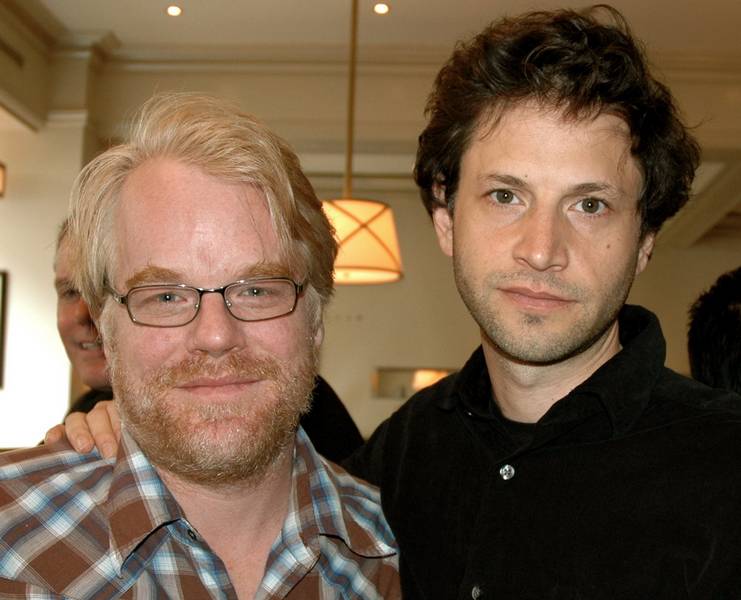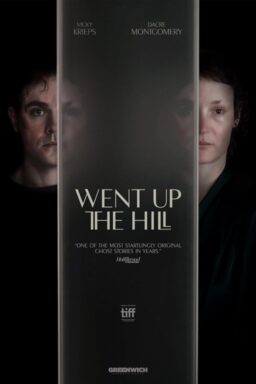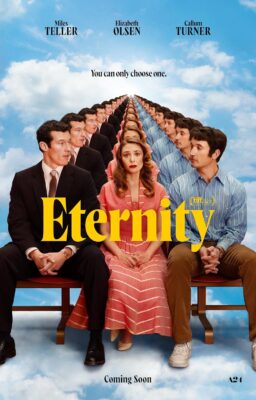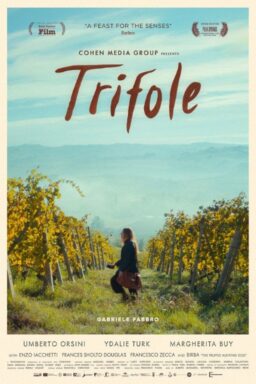TORONTO – It was like I had moved to a city where only movie people live. I wandered Toronto on Saturday, from screening to party, and on the busiest day of the 30th annual Toronto Film Festival there were more stars, as MGM liked to say, than in the heavens. Amazing: I ran into Deborah Kara Unger, Ed Harris, Kris Kristofferson, Steve Martin, Anthony Hopkins, Peter Sarsgaard and Maggie Gyllenhaal without even trying to, just because they were right there on the sidewalk or in the hotel lobby.
The showbiz columnist George Christy held his 21st annual brunch, always at the Four Seasons, always with chicken pot pie on the menu, and I met and actually spoke with Philip Seymour Hoffman, who will be nominated for “Capote,” and Cuba Gooding Jr., the conflicted hit man in “Shadowboxer.” I also met with the directors Norman Jewison (handling out samples of maple syrup from his farm), Lee Daniels (produced “Monster’s Ball,” directed “Shadowboxer”) and Atom Egoyan (“Where the Heart Lies”), who was with his wife the actress Arsinee Khanjian; they met Paul Haggis (writer of “Million Dollar Baby” and director of “Crash”) and told him how extraordinary it was for a first-time director to make a film of the complexity of “Crash.” “Just the car crash scene,” Egoyan said, “a lot of directors couldn’t have done that without a few films under their belts.”
Oh and here was Jennifer Tilly, so funny she slipped into the dreadful horror film “Seed of Chucky” and created her own comedy right there under their noses (“I’m an Oscar nominee, and now I’m f—— a puppet!”). She’s at Toronto with Terry Gilliam’s “Tideland,” which she says is wonderfully strange, and if it’s strange to Jennifer Tilly, it’s certainly going to be strange to me. And here were Cillian Murphy and director Neil Jordon, for the Toronto premiere of “Breakfast on Pluto,” a movie about an Irish boy who decides from an early age to present himself as a girl, and imposes that vision on society by his very innocence. And Lisa Ray and Joseph Abraham, the co-stars of Deepa Mehta’s opening-night film “Water,” about child widows in India.
That evening, after two screenings and an interview, I went to the dinner given by Sony Pictures Classics and saw Hoffman again, along with his director Bennett Miller, and, good lord, here was Catherine Keener, the co-star of “Capote,” who plays Capote’s best friend, the author Harper Lee. Keener walks into every kind of movie and is simply splendid. Already this year: “The Ballad of Jack and Rose” and “The 40-Year-Old Virgin,” where her sweetness helps turn a sex comedy into a heartwarmer.
“Catherine Keener is an amazing woman,” said Michael Barker, co-president of Sony Classics. “She’s not contractually required to be here to promote the film, but we told her about it, and she’s always there for you. And the thing is, she comes all by herself. Just gets on the plane. No publicist, no hairdresser, no retinue.” And without a lot of time to pack, I observe, considering her Sonic Youth (“I Believe in Anita Hill”) T-shirt.
At Barker’s table were Henry S. Rosenthal and Jeff Feuerzeig, the kinds of indies Toronto always has room for. They produced and directed “The Devil and Daniel Johnston,” a doc about a brilliant, reclusive, troubled singer-songwriter who makes his first public appearance in years. Turns out Rosenthal also produced Jon Jost’s “All the Vermeers in New York” (2005) and Feuerzeig directed “Half Japanese,” a film about a garage band that aspires to stay in its garage. People like Rosenthal and Feuerzeig are like battlefield transfusions for the film industry, pumping in fresh blood from the front lines. Block that metaphor!
In the afternoon I had a talk with Bob Hoskins, Judi Dench’s co-star in “Mrs. Henderson Presents.” The movie tells the story of London’s famed Windmill Theater, in the heart of Soho, which presented a nonstop revue all day long featuring singers, dancers, jugglers, magicians, dancing girls and (the crucial element) beautiful nude women, who were not allowed to move a single muscle while they were nude.
The movie involves the famous ruling by the Lord Chamberlain, who censored all British stage productions: If a nude woman on stage is moving, it is obscene. If she is perfectly still, it can be considered art, just like all those Botticellis in the National Gallery. This ruling is obscurely related, I feel, to Fanny Brice’s opinion of the swimming-movie star Esther Williams: “Dry, she’s not much. But wet, she’s a star.”
Hoskins has a lot of gears in his shift box. He can be the most savage and venomous of actors, or alternatively the sunniest and most reasonable. Earlier this year, in “Unleashed,” he played a gangster who kept a martial arts fighter (Jet Li) in a cage and treated him like his own attack dog. Now he plays a perfectly groomed and barbered West End impresario who despite the scandalous nature of his theater is always honest and kind, and takes the girls out to dinner once a week during rationing.
He and Dench have a rapport based on the eccentricity of her character and the perfect timing of them both. “Americans,” she says, “Strange people. Good manners.” When Hitler started bombing London, the Windmill alone among all theaters never closed. Dench’s Mrs. Henderson confides that after her only son was killed in World War One, she found a French postcard in his room, and realized he may never have seen a nude woman. That made her so sad, she says, that she determined to keep her theater open as a service to the boys going overseas, who if they were killed at least had the consolation of having gazed upon a Windmill girl.
My interview with Hoskins awaits the film’s opening, because my space is limited and I want to move along to “The World's Fastest Indian” (2006). The festival has seven days to go and who knows what wonders to unveil, but “Indian” is certainly going to be a contender for the People’s Choice Award, voted on by the moviegoers themselves. Hopkins usually makes serious films, and the director, Roger Donaldson, often makes big-budget thrillers (“Species,” “The Recruit,” “White Sands,” “No Way Out”). This time they tell the true story of a 68-year-old New Zealander named Burt Munro, straight and true as a board, kind as a saint, innocent as a monk, who spends his entire life tinkering with an Indian motorcycle.
The cycle is rated to go 60 mph, maybe. He customizes it, streamlines it, lies almost prone atop it, and thinks it will go 200 mph. The first two-third of the movie involves his long and underfinanced journey from New Zealand to Speed Week on the Bonneville salt flats in Utah, where world speed records are broken. His goal: Drive the Indian faster than an Indian has ever been driven before.
Whether he succeeds, I cannot reveal at this time. What’s rich about the movie is that he meets a series of Americans as helpful as they are odd, including an Indian chief who gives him powdered dog bones for his prostate trouble (they work), a farm widow who helps him replace an axle and then says, “Burt, where you sleepin’ tonight?”, and a Nevada cop who clocks him at 140 on the Indian and observes that while Nevada has no speed limit, drivers are expected to drive sanely. Good thing the cop doesn’t know the Indian has no brakes.












